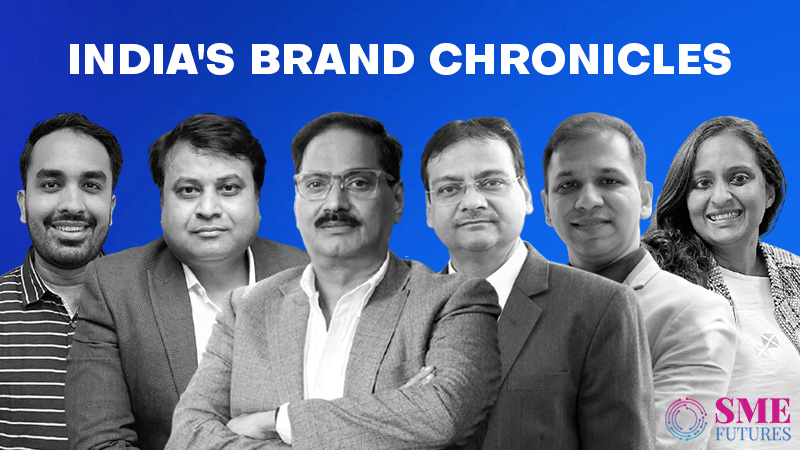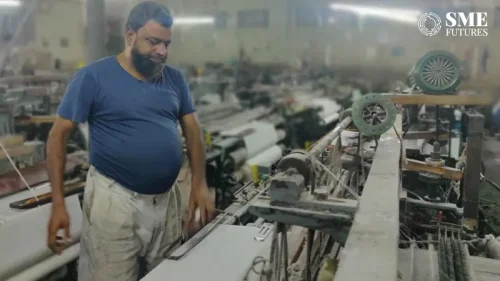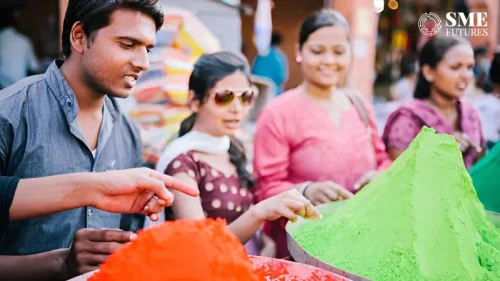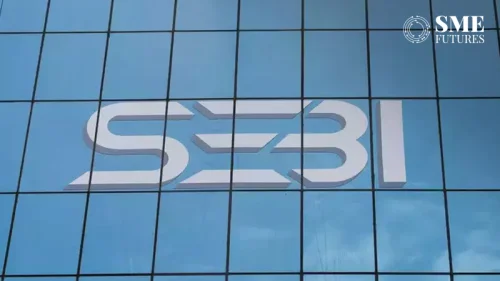Surely, anyone who comes across this article would be aware of the prominent family-owned businesses in India such as those owned by the Tata’s, the Birla’s, the Godrej’s or the Ambani’s. With its rich business history and its traditional form of firm ownership, India has a strong entrepreneurship culture. And, if you look closely nearby, you will find many examples of businesses small or big led by families. For example, your next door kirana store is a family-owned business, your favourite sweet shop is some 50 years old and now managed by the third generation of the family that owns it. And they are everywhere.
These businesses contribute almost 80 per cent of the GDP and various kinds of research states that around 80 per cent of the companies in India are family owned. Also, at least 17 Indian businesses come under the world’s 500 largest family-owned enterprises list prepared by consulting firm EY. A Deloitte report estimates that family-owned firms contribute to 18 per cent of India Inc’s assets, 25 per cent to its sales, 37 per cent of its reserves and 32 per cent of its profits after taxes.
So, when I say that these family-owned businesses are India’s economic engine, I’m not kidding.
Another fact about family-owned businesses is that they typically operated in the manufacturing sector prior to liberalisation, but this trend shifted as they became more familiar with the service sector. There has been a significant increase in the number of family-owned businesses. And, despite facing difficult business conditions, these firms have proven to be extremely resilient, mirroring the economy.
Changes are imperative
The acceptance of transition and the ability to change for the better lies behind these family-owned firms’ resilience, dominance and success. There are numerous stories in India about successful family-owned businesses, where change has pivoted them. Changes that had to be adapted to due to the changing mindsets, changing generations and the changing patterns of consumerism.
We spoke with several family-owned businesses in India to find out their stories of transformation and how their younger generations brought about positive changes that helped them to adapt to the changing times and prosper.
One of the many observations made during the interviews was that without making changes, these family-owned businesses would not have been able to make it to the list of successful businesses. Transformation, transition or change, whichever way you prefer to say it, has played an important role in their success.
“Though change is challenging, it is equally imperative for the growth of a business,” says Vinod Kumar Gupta, Managing Director at Dollar Industries Limited—a well-known hosiery and knitwear brand—that millions of people wear daily for comfort. “It is the responsibility of the younger generation joining the family business to offer a fresh pair of eyes,” he adds.
In his opinion, the success of a great family business is due to the perfect blend of both worlds – experience clubbed with modern thinking and new-age vision.
Totally agree with that! Here are the six stories of transformation.
From wholesaling to an FMCG conglomerate
During the Kalyan Singh government’s rule in Uttar Pradesh in 1998, the sale of mustard oil was prohibited. It was because of the dropsy epidemic, which was caused by the consumption of adulterated oil.
Due to these health risks, people began to avoid mustard oil and sales dropped while businesses went into a slump. Amidst this crisis, the Bail Kolhu oil brand came into the limelight, as they cashed in on the opportunity by boldly advertising and marketing their oil as safe to consume.
“After assuring the then food minister Hukum Singh about the quality of our oil, we asked permission to sell mustard oil. Later, through ads, a message was given to the customers that mustard oil is high-quality and edible. That was a bold move. Suddenly our sales tripled,” Ghanshyam Khandelwal, Chairman of BL Agro Industries recounts.
This was just one incident, and he has many more to share with us.
Wishing to transform his family’s oil business, in 1957, Khandelwal, a science graduate and lab chemist joined the family’s oil business and established a small lab in Bareilly. But people laughed, family members had little to no faith, and there were many obstacles as he rehashed his family’s oil business.
“That was an era of ration permits. No one cared about the quality of oil. But as I worked to better the quality, family members did not encourage me. However, I remained firm on my word. I learned the trade from my family and worked in the lab. I also studied The Prevention of Food Adulteration Act, 1954 in detail, and kept a steady focus on analysing the quality of oil according to the act,” he says.
Khandelwal’s goal was to turn his family’s wholesale business into a brand. “That was a struggle, as we did not get familial support and it took a lot of hard work to reach the end consumer,” he further adds.
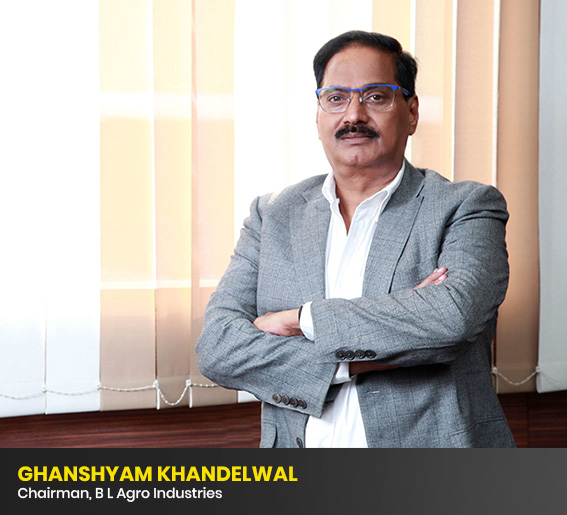
Taking inspiration from big companies like Hindustan Lever and Lipton, he made many plans. After his father died in 1981, Khandelwal and his younger brother established a separate business. Again in 1982, when India’s consumer culture was changing, Khandelwal took another risk, “We started to manually pack and sell mustard oil in small bottles of a litre and half litre, even door to door. I named my brand Bail Kolhu,” he recalls.
Bail Kolhu refers to a traditional (ayurvedic) method of extracting oil. In 1985, the brand got registered with a trademark and soon got the Agmark certification. “It was due to the continuous monitoring of oil quality, that my brand became very popular in eastern Uttar Pradesh,” he says.
Moving on, Khandelwal kept rehashing his strategies and brought in new ones. One of them was technology on the shopfloors.
It was an important change that made them big, he says. The company first installed a manual filling machine and an automatic pouch machine and started selling oil in different pouches in 1990. Since then, BL Agro has been a regular in tech implementation.
Khandelwal delegated the responsibility of his traditional business to his younger brother in 2008. While he and his son established a new oil refinery factory and a large modern lab in the Paraskhera Industrial Area.
Lately, after seeing the surge in healthy and mindful eating, BL Agro has launched another brand called Nourish, focusing on their roadmap till 2025. This brand caters to the staple food segments such as flour, pulses, rice, spices, and more. “Nourish has got tremendous success in the market and has become a well-known brand,” he says.
In the 1980s, television was not in vogue; and the only way to advertise was to put up stalls or make loudspeaker announcements. They talked one-on-one with the retailers. There were few players and less competition. And if anyone knows how to play well, and has a quality product, their business will succeed, he says.
On the contrary, it’s been tough for his successors, he adds.
Along with Khandelwal’s son, his daughter Richa Khandelwal too looks after their marketing activities.
“The FMCG market is up to the brim with similar players like us, and new players are entering it as well. Thus, the competition is stiff. Advertisement methods have changed, and they cost in crores. But I also know that the younger generation is too smart. With new learnings and strategies, they are working it out. For instance, my son has already set up Asia’s best plant,” he asserts.
Last year they realised the importance of a D2C website and launched one for their brands. But he isn’t done yet, Khandelwal says, adding that they will keep improving, and will give their consumers what is best for them.

Being the ‘big boss’ of the innerwear segment
Fit hai boss—is their slogan. Over the course of four decades, they have amassed a 15 per cent market share in this category. And have a strong presence in 29 Indian states. Beyond borders, the brand is the best-selling Indian innerwear in the UAE, the Middle East, as well as in Myanmar, Nepal and Nigeria.
We are talking about Kolkata based Dollar Industries, formerly called Bhawani Textiles.
However, it was a different story for them in the past because it was a local brand with a limited reach.
Dindayal Gupta founded the company between 1972-73. When Dindayal’s sons began to contribute, the brand pivoted in the market and was positioned next to Lux and Rupa.
Talking to us, Vinod Gupta, second-generation entrepreneur, and MD at Dollar Industries tells us their success mantra.
“The unified vision, innovation, and optimum utilisation of in-house abilities have together contributed to the substantial growth of the brand since its inception. It has also achieved a noticeable presence across social media and e-commerce platforms,” he tells us.

Post joining in, Vinod computerised the operations. Other executive decisions led to the expansion of their retailer and distribution network. They asked them to sell only Dollar. Meanwhile, roping in Salman Khan and later Akshay Kumar gave a tremendous thrust to the company’s sales.
He believes that it is the responsibility of the younger generation joining the family business to offer a fresh pair of eyes. That’s what he did when he joined the business and now the third generation is doing it as well. “The younger generation at Dollar has successfully brought many transitions which were necessary,” he says.
For instance, they have made Dollar’s presence felt across e-commerce platforms, especially during the pandemic. E-commerce sales have provided a great boost to the business, and this has been brought about by the younger generation. “The younger generation in our family business has taken a keen interest in Dollar’s social media presence and handling along with marketing and communications to send out a clear message to our target customers, thereby attracting more consumers in the process,” he continues.
For Dollar, constant innovation has been the catalyst for its tremendous growth, he adds. “Being in the sector for over four decades, Dollar has always adopted new techniques and clubbed them with the successful traditional practices. We will keep doing this,” he says.
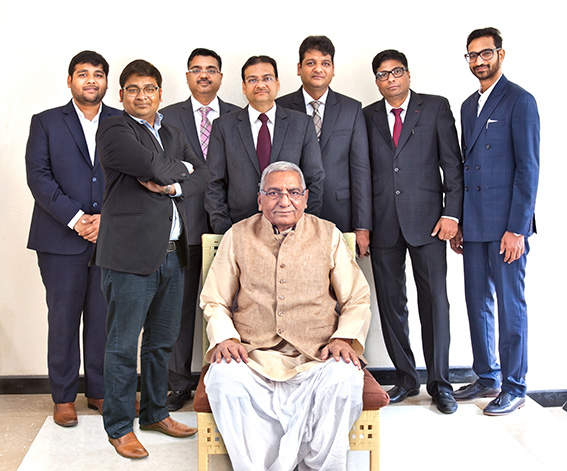
From shuttlecocks to smart watches, it’s all about their consumers
Most of the sports manufacturing businesses in India are family-owned firms. One of them is the leading sports brand Cockatoo Sports Pvt ltd, based out of Jalandhar, Punjab. They are famous as the Anand Brothers.
Since 1981, Cockatoo has been manufacturing all sorts of sports related goods, from skipping ropes to gym equipment and now smart watches too.
At the beginning it was only shuttlecocks and tennis balls that they manufactured, says Gaurav Anand, Co-founder and the Finance & Management head of the company. “My father, Shri Bhushan Anand started it. He started with selling shuttlecocks and tennis balls under the brand called Guru. Now it’s been 40 years,” he says.
The difference between then and now, according to Gaurav, is the change in consumer preference, which has prompted Cockatoo to change as well. Gaurav is a second-generation entrepreneur who has played a key role in transitioning his family business. According to Gaurav, the journey has been tremendous, with the expansion of their product portfolio and the company being a learning experience for him.
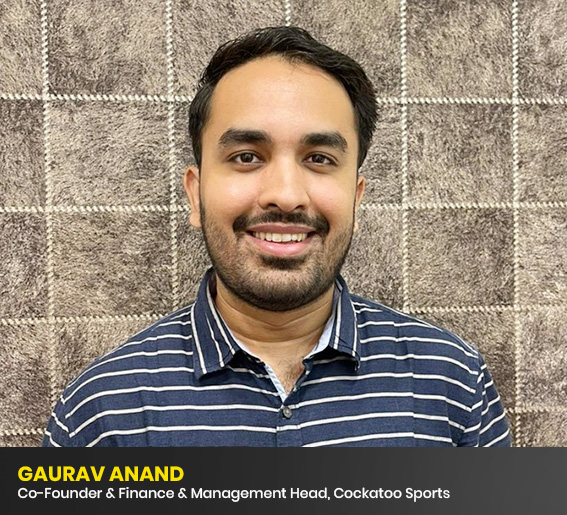
“Firstly, it’s all about our consumers and their needs. In the last 40 years, I have seen my father understanding customers and dealing with them accordingly. Seeing him working enthusiastically always motivated me, and I wanted to help. So, 10 years back when I took up the role as co-founder, I started researching on the needs of the new age customers,” he recounts.
That was the first step towards Cockatoo’s transition. And technology played a major part in it.
The thing is that their new age consumers are millennials and Gen Z and it’s not just about playing gully cricket anymore. Today’s consumers are into fitness and use gadgets. Gaurav realised that they needed to initiate a revolution in their sport equipment division. “We researched and decided to narrow the bridge between technology and fitness. This resulted in a wide array of products in our product portfolio, including the latest fitness devices. We recently launched our first smart wearable, the Y2 smartwatch,” he avers.
Since it’s a family affair, usually the successors are under a lot of pressure when the business is being passed on to them. But Gaurav feels otherwise, as his father encouraged him to do something new and take up the challenge as the next in line.
“It was the happiness and the excitement of it that encouraged me to take up the challenge of bringing new things into the business. But as its rightly said, ‘the bigger the role, the bigger is the responsibility’. Though it was tough at times, I can firmly say that it’s been great so far. And we have come a long way since Cockatoo’s birth,” Gaurav tells us.
Another advantage of a family-owned business is that, at work you feel like you are at home. Gaurav has had the same experience, “We both share the same office. It’s a good thing, as we can share ideas and can brainstorm together,” he says.
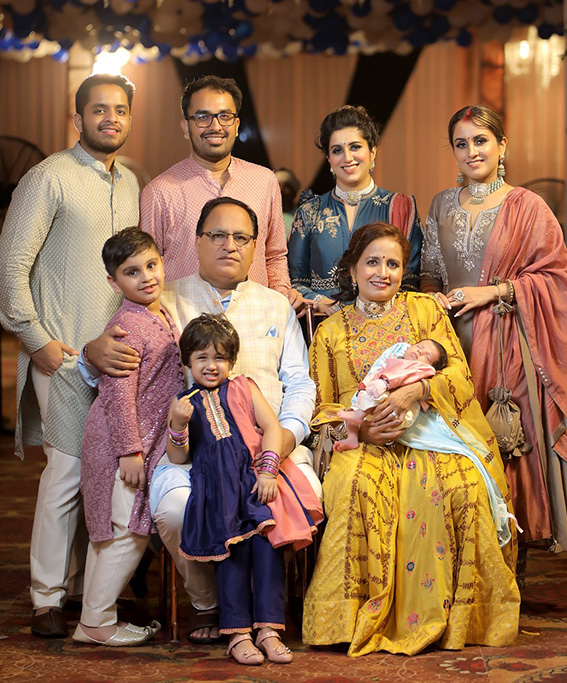
In fact, it helps keep the creative juices flowing and the business problems at bay. “When I see my father working with the same zeal as he did 40 years ago, it energises me to keep moving. Through hard times at work, I am still calm because of my father’s presence and approachability. While making important decisions, working in the same premises definitely helps as it speeds up the process and opens up channels for discussions. It simply gives a feeling of being together and at home,” Gaurav says.
Cockatoo started with sports equipment, moved on to gym equipment and recently they have forayed into smart gadgets. “We want to provide the best fitness equipment to our customers. Right now, this is the plan that I look forward to,” says Gaurav while talking about the roadmap for his business.
Relocating successfully since 1986
35 years ago, two friends, Rajeev Bhargava and Rajiv Sharma founded PMR, a relocation company. Its wide array of services includes HHG moving, commercial moving, storage, home-school search and utility services. In a nutshell, they can relocate or move anything from commercial props to your pet.
Now, second generation entrepreneur Aakanksha Bhargava looks after PMR operations as its CEO.
For a firm in this male dominated sector, having a female CEO is the biggest transition. Bhargava joined the business at the age of 21. But the corporate world was not ready to accept her as a boss.
“They were apprehensive to see women in leadership positions handling businesses independently and strongly, especially considering it being a male centric industry and its unorganised nature. It was difficult to connect and network with suppliers, partners, top clients and business associates. They thought about the maturity, commitment and the length and breadth of my persona. Back then, I remember I had to tell myself to pull myself together and focus,” she recounts.
Apart from this, not many people believed that the relocation business could advance into an organised setup in the country considering the given dynamics of India. But it’s all in the past now. PMR has grown 20 times in the last 14 years under her leadership, with many new verticals being added.
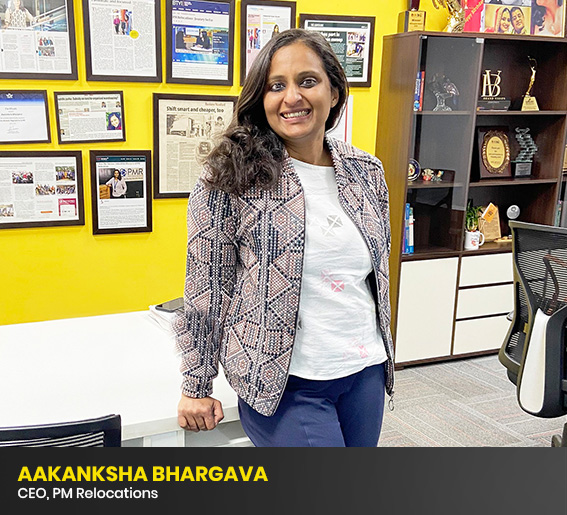
According to her, the credit goes to the perfect sync and balance between the passionate hearts of the younger generation and the experienced minds of the older generation. “Since I joined in 2007, we have advanced from a turnover of Rs 3 crores to closing in around Rs 75+ crores in 2021, from a team of 40 odd people to 500 and from operating in 2 cities to global operations. Our clientele now includes top corporates and embassies for their global relocation needs. We have not only expanded to tier 1 cities but also service tier 2 and tier 3 cities,” says Akanksha.
Many changes were required to achieve this success. “One of the key significant changes that I brought to the family business was in the approach and innovation we adopted to amplify our business outreach to the global platform,” she comments.
“I was often looked at as the boss’s daughter and hence, my first and foremost step was to align our long-term vision and work towards scalability. In a short span of time, I went on to handle PMR’s corporate sales, marketing, and operations, among other departments,” she adds.
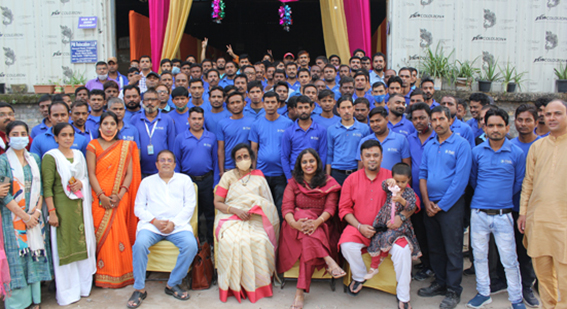
She travelled vastly and worked to understand the culture and feel the pulse across different regions. Which helped her in establishing an experienced team.
“I handpicked each of my team members; worked with them from the grassroot level day in and day out. Back then, my passion revolved around making PMR a recognised name in an unorganised sector. Due to our clarity of vision, we saw immense increase in efficiency, transparency, and productivity in PMR’s already smooth functioning,” she says.
After all these years working in the family business, she feels that the balance between the older and newer generations is imperative to lead the company into being a steady profitable venture. Especially when one is working in an unconventional setup, she says. “My father has always taught me to evolve and inspire my team to grow collectively and to emerge as a team of professionals who are fearless, original and versatile not only in our thought-process but also in our work,” she adds.
An insight into the beauty industry
Dinesh Jain, founder of Insight Cosmetics started with 10 employees in 1986 from Vasai in Mumbai. Today, his brand has a distribution network across 20 states and 12,000 retail and novelty stores pan India, with over 350 SKUs.
“We started with producing and selling nail polishes,” says Jain. It was a limited range available in physical stores. With time, after gaining experience and insights into the world of cosmetics, Jain diversified the portfolio. “We started manufacturing compact powders, lipsticks and a few more basic products,” he says.
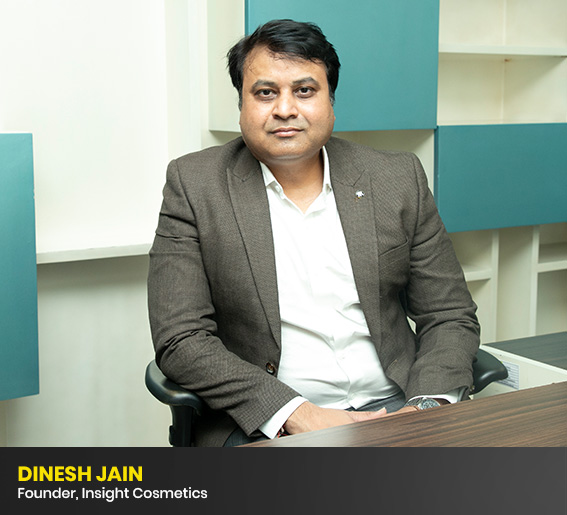
According to Jain, constant change resulted in the company’s evolution.
“We evolved in multiple ways. We kept up with the cosmetic trends and our range of products has grown to a wide range of make-up products. Also, we grew to include a select range of value-added make-up products. Started purely offline, we have opened new channels for sales now. Today, you can buy our products on online platforms. Over the years, we focused on building our tech infra, our client database and collecting and analysing cosmetic trends across various sectors and geolocations. Our current focus is on lowering our customer acquiring cost through all the data we collect and the trends in the cosmetic market,” he informs us.
Talking about challenges, switching to tech was a task. Jain tells us that as keeping up with trends is a necessity, they had to collect data manually. This was daunting and lacked the multiple details that could help them study and track the insights.
“We moved to use data tracking and collection software. But it was still challenging to collect more comprehensive data. Many older, more seasoned staff and core team members could not easily switch to the software we used. There was resistance from the more senior members. We had to spend more time and effort with our staff. It took us multiple methods and edits to perfectly blend all our processes and systems with the software,” says Jain.
Even when Insight’s digital sales started along with its D2C, they faced excessive package returns. “We encountered speed bumps regarding our supply chain when it came to selling online. Our helpline team had to be well trained to help customers with their issues. With each roadblock, we learnt, adapted and evolved our business model,” he narrates.
Besides Jain, the second generation is now contributing to Insight Cosmetics.
“The new generation in the business makes sure that the company evolves with the market. My son, Mihir Jain made Insight Cosmetics gain an omnichannel sales presence from being a single channel brand,” says Jain.

“When Mihir joined the family business, he took the company online across multiple platforms, making our products available across 18000 pin codes. He included numerous channels for our products’ sales and associated the brand with many companies for deeper penetration into the untapped markets. In addition, he increased offline sales by expanding to more locations,” he further adds.
As a result, Insight’s marketing strategy today includes digital marketing, social media marketing, influencer marketing, and collaborations with the right brands and people. Currently, the brand is all set to expand production capacity by 40 per cent in the coming year.
The family which makes fashion accessible
“Madame was started as a family-owned business with huge ambitions, and as family-owned enterprises work, it was mostly managed by a small group of people. You can say that it was a one-person-army at the outset,”
says Akhil Jain, Executive Director at Madame, an Indian fashion forward brand for young people run by Jain’s family.
Madame was established in 1993 as a division of the legacy cloth business.
As they grew and moved forward, a lot of delegation had to be done over the years. “We have created a well-performing structure,” says Akhil.
Everyone who is part of the promoter family, is allocated a unique set of operations and areas to focus on. This has led to the evolution of the business into a professionally managed enterprise in the last one decade.
“Because our products are targeted towards the younger population and we are operating in a technology-driven and ever-evolving market structure, we have tried to create a mechanism which ensures that our operations are always in accordance with the needs and wants of the market. This is where the younger generation steps in,” opines Akhil.
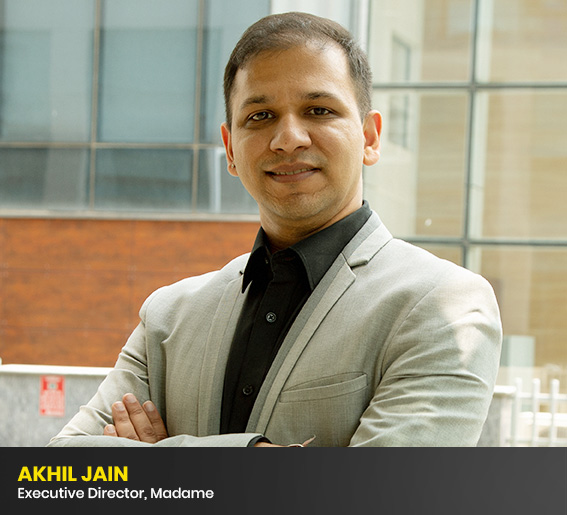
He tells us that to manage the business, they have divided responsibilities among the younger and older generation based on their expertise, which makes work easier. “The older generation includes Bipan Jain, Sunil Jain, and our chairperson Shri Kasturi Lal Jain. They look after the governance side of the business. While me, Vibhav and Ashish are primarily focusing on the operations part of the business. We continuously seek guidance from the governance team to make sure it’s a perfect mix of experience and youth,” he explains.
But there are challenges as well that are linked to operations, marketing, etc. “We manage to overcome issues, as we have maintained that we will stick to our aim—deliver the best-quality products and provide delightful customer experiences. This has largely been a blessing of our elders who ran the business with utmost efficiency and took it to a certain pedestal,” says Akhil.
But, as Akhil points out, the challenges have evolved with the times. “The challenges we face today are entirely different in magnitude. Firstly, the market changes rapidly; you can witness a sea change in how things function in the market every three to four years. This impels us to stay alert and be willing to experiment with new models, technologies, and practices,” he adds.
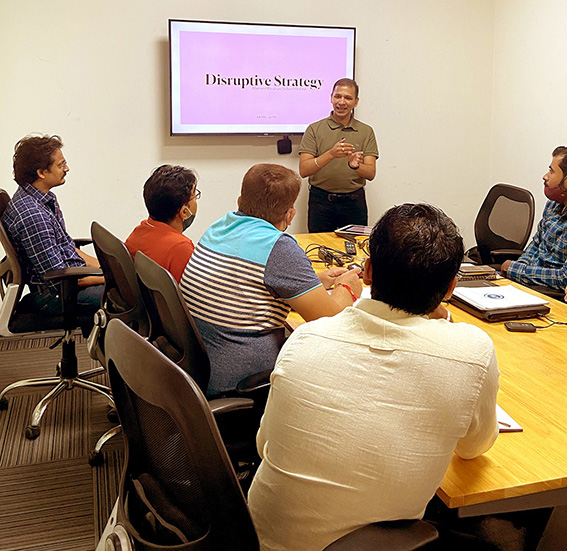
Narrating the downside, Akhil tells us that Madame’s management was reluctant to try something new and different. That gave the other players in the market an advantage over them. “Other players adopted new methods such as digital commerce before us. However, we are now committed to overcoming these challenges as well and are determined to continue growing rapidly,” he tells us.
In a nutgraf
Speaking with these family-owned businesses, I discovered that every successful family-owned business has a tight-knit group of people managing it from behind the scenes. Their success mantra is to change strategies and adapt to the current trends. In addition, the combination of old and new blood gives these companies an advantage over their competitors.
In the next series on family-owned businesses, we will talk about succession planning and family offices. So, keep an eye on the upcoming stories on SME Futures.

